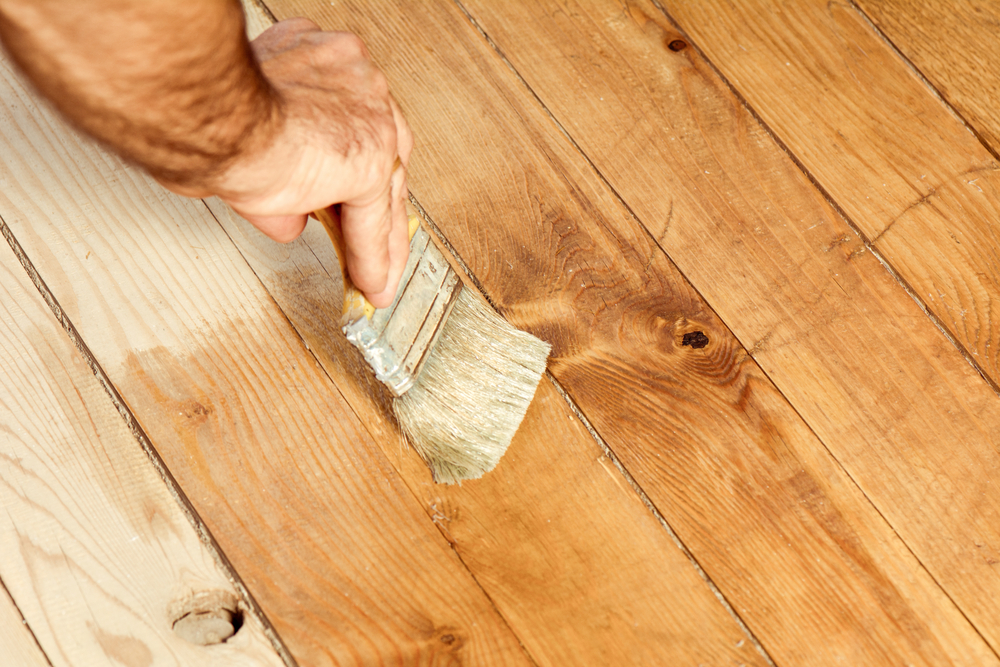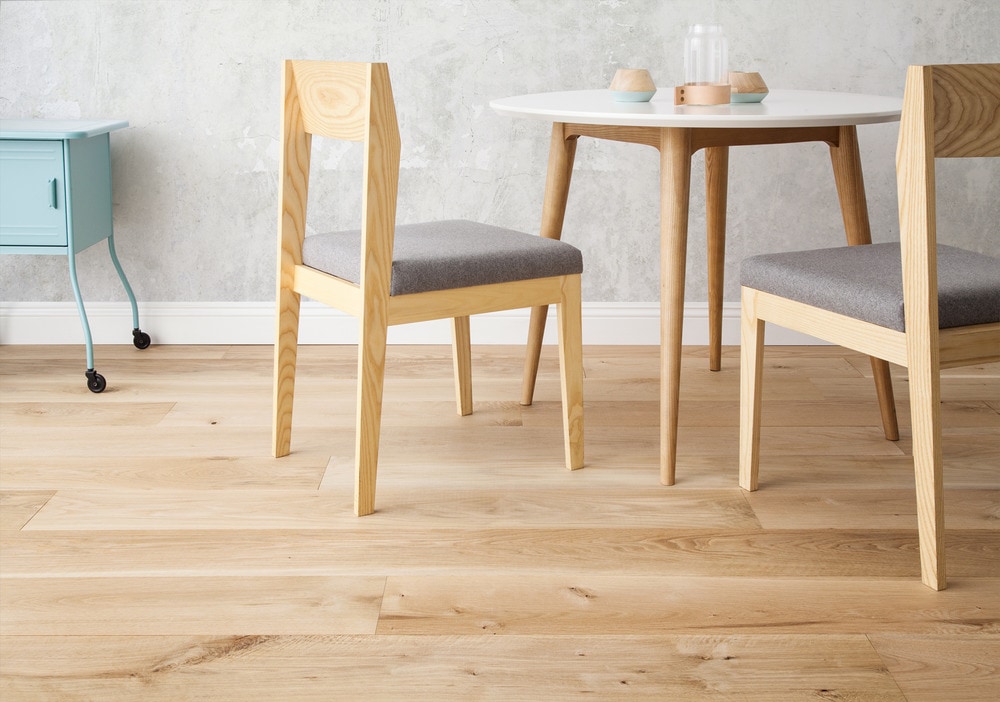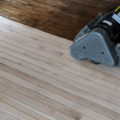How to Choose a Non-Toxic Hardwood Floor Finish
Hardwood floors are a sought-after flooring in new and historic homes alike. With so many different species of wood available, it is easy to find a flooring that enhances any style of decor. Whether you are looking to refinish original hardwood flooring or you’re installing it for the first time, choosing a non-toxic hardwood floor finish is essential to improving indoor air quality and creating a healthier atmosphere in the home. Many traditional paints and stains contain harmful VOCs. Fortunately, today’s focus on making more environmentally friendly choices has encouraged many manufacturers to create non-toxic alternatives.
Understanding VOCs
Many stains and coatings contain volatile organic compounds, otherwise known as VOCs. These materials are capable of releasing vapors such as formaldehyde in the home at a normal temperature. These vapors can cause, long-term health problems, especially in people that have re-existing lung problems or diseases. When certain paints and coatings are used in the home, there can be between 2 to 5 times more VOCs in the air inside the home that occur outside, reducing overall air quality.
Over time, exposure to high levels of VOCs can cause lung issues, nausea, liver damage, kidney damage, eye irritation, throat irritation, and nervous system issues. These greenhouse gasses aren’t just dangerous to humans, they are also bad for the environment. Lowering the VOC levels in the home starts by paying attention to the contents of paints, sealers, waxes, adhesives, cleaning supplies, manufactured wood, and upholstery treatments.
When looking for healthier options, you’ll find one of three ratings:
- No VOCs: these finishes are crafted from natural earth minerals and are completely free of VOCs.
- Zero VOCs: There are some substances with 5 grams of VOCs per liter or fewer that receive a zero VOC rating. While these are a much safer choice than other options, there are still some VOCs present.
- Low VOCs: This category of paints and stains can contain up to 200 grams of VOCs per liter, which is much lower than a traditional paint or stain but not as healthy as a no VOC or zero VOC rating.
Choosing a Non-Toxic Hardwood Floor Finish
A new understanding of VOCs and the dangers of them has encouraged more companies to formulate low-VOC options for stains and coatings. When you’re goal is to create the healthiest environment inside the home, choosing a non-toxic hardwood floor stain and sealer is essential.
Polyurethane
When it comes to choosing a polyurethane there are two main options, oil-based polyurethanes and water-based polyurethanes. Typically, oil-based polyurethanes contain much higher level of VOCs. Water-based polyurethanes are a much heather option. They dry clear in minimal time and produce very little odor. The fast-drying nature of the water-based version make it faster to apply multiple coats. Unfortunately, water-based polyurethane his a higher price point than their oil-based counterparts and can wear down faster as well. To combat this, simply reapply the polyurethane as instructed. As an added benefit, water-based polyurethanes are not explosive or flammable.
Hardwood Floor Oils
When you want to draw out the natural wood grain and coloration of hardwood floors, using an oil is a great option. Oils, such as linseed or tung oil, penetrate the wood rather than sitting on top of it. Choose a clear option to keep the look natural or select an oil with a stain to create a deeper color. Oils applied to wood floors results in a low-sheen look. Because there is not as thick of a coating as a polyurethane, the floor can be more susceptible to dents and scratches over time. While the oils themselves do produce an odor, the odor is free of VOCs, making it safe for use in the home or office.
Sealants
Historically, most sealants contain VOCs. Fortunately, some companies have started to produce a healthier line of sealants designed to keep the air in the home healthier to breathe. Make sure to check labels for environmentally-friendly sealants that offer low or no VOCs. Make sure to read the labels carefully for one of the three VOC ratings. Keep in mind that if the sealant is sold in quantities less than a liter, VOC levels will not be as carefully monitored. For that reason, choose sealants in a larger quantity.
Tips for Applying Your Finishes
If you have an older home and worry that the previously used floor finishes are releasing VOCs, start by sanding down the old finish, making sure the wear the proper protective gear as you strip away the old coating. Once the old finish is gone, test the new finish in an inconspicuous area to make sure you like the look. Once you see it on your specific hardwoods, it is time to coat the rest of the floor in the polyurethane, oil, or sealant of choice. Make sure to follow manufacturer instructions carefully to achieve the best results possible.
Making environmentally-friendly choices throughout the home will help to lower your carbon footprint and provide a clean environment for everyone who spends time inside. With a renewed focus on producing healthier products, it is easy to find low or no VOC options that provide the look you want for your hardwood floors while improving the air quality inside the home. Choosing healthy choices for the home doesn’t just include wood floor coatings. You can also choose non-toxic wall paint.




